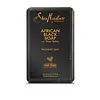What's inside
What's inside
 Key Ingredients
Key Ingredients

 Benefits
Benefits

 Concerns
Concerns

 Ingredients Side-by-side
Ingredients Side-by-side

Water
Skin ConditioningDecyl Glucoside
CleansingGlycerin
HumectantDisodium Cocoamphodiacetate
CleansingCocamidopropyl Hydroxysultaine
CleansingAcrylates/C10-30 Alkyl Acrylate Crosspolymer
Emulsion StabilisingCocamidopropyl Dimethylamine
EmulsifyingSalicylic Acid
MaskingHelianthus Annuus Seed Oil
EmollientCarthamus Tinctorius Seed Oil
MaskingOlea Europaea Fruit Oil
MaskingPhenoxyethanol
PreservativeSodium Hydroxide
BufferingEthylhexylglycerin
Skin ConditioningTetrasodium Glutamate Diacetate
Polysorbate 80
EmulsifyingWater, Decyl Glucoside, Glycerin, Disodium Cocoamphodiacetate, Cocamidopropyl Hydroxysultaine, Acrylates/C10-30 Alkyl Acrylate Crosspolymer, Cocamidopropyl Dimethylamine, Salicylic Acid, Helianthus Annuus Seed Oil, Carthamus Tinctorius Seed Oil, Olea Europaea Fruit Oil, Phenoxyethanol, Sodium Hydroxide, Ethylhexylglycerin, Tetrasodium Glutamate Diacetate, Polysorbate 80
Sodium Palmate
CleansingSodium Palm Kernelate
CleansingGlycerin
HumectantParfum
MaskingButyrospermum Parkii Butter
Skin ConditioningSodium Chloride
MaskingAvena Sativa Kernel Meal
AbrasiveAloe Barbadensis Leaf Juice
Skin ConditioningPlantago Major Leaf Extract
Skin ConditioningTocopheryl Acetate
AntioxidantRosmarinus Officinalis Leaf Extract
AntimicrobialTetrasodium Etidronate
Emulsion StabilisingCharcoal
AbrasivePentasodium Pentetate
Iron Oxides
Sodium Palmate, Sodium Palm Kernelate, Glycerin, Parfum, Butyrospermum Parkii Butter, Sodium Chloride, Avena Sativa Kernel Meal, Aloe Barbadensis Leaf Juice, Plantago Major Leaf Extract, Tocopheryl Acetate, Rosmarinus Officinalis Leaf Extract, Tetrasodium Etidronate, Charcoal, Pentasodium Pentetate, Iron Oxides
 Reviews
Reviews

Ingredients Explained
These ingredients are found in both products.
Ingredients higher up in an ingredient list are typically present in a larger amount.
Glycerin is already naturally found in your skin. It helps moisturize and protect your skin.
A study from 2016 found glycerin to be more effective as a humectant than AHAs and hyaluronic acid.
As a humectant, it helps the skin stay hydrated by pulling moisture to your skin. The low molecular weight of glycerin allows it to pull moisture into the deeper layers of your skin.
Hydrated skin improves your skin barrier; Your skin barrier helps protect against irritants and bacteria.
Glycerin has also been found to have antimicrobial and antiviral properties. Due to these properties, glycerin is often used in wound and burn treatments.
In cosmetics, glycerin is usually derived from plants such as soybean or palm. However, it can also be sourced from animals, such as tallow or animal fat.
This ingredient is organic, colorless, odorless, and non-toxic.
Glycerin is the name for this ingredient in American English. British English uses Glycerol/Glycerine.
Learn more about Glycerin